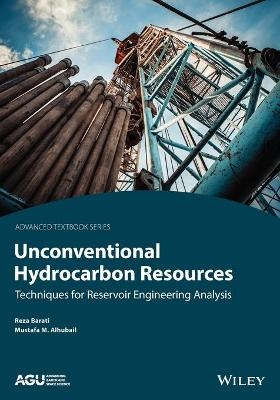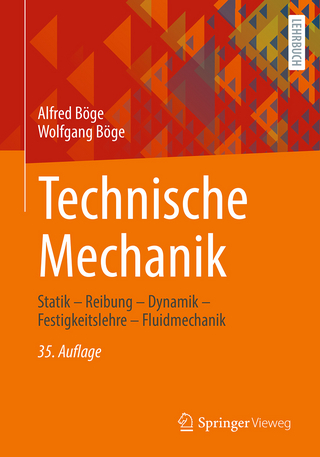
Unconventional Hydrocarbon Resources
American Geophysical Union (Verlag)
9781119420323 (ISBN)
Significant reserves of hydrocarbons cannot be extracted using conventional methods. Improvements in techniques such as horizontal drilling and hydraulic fracturing have increased access to unconventional hydrocarbon resources, ushering in the “shale boom” and disrupting the energy sector.
Unconventional Hydrocarbon Resources: Techniques for Reservoir Engineering Analysis covers the geochemistry, petrophysics, geomechanics, and economics of unconventional shale oil plays. The text uses a step-by-step approach to demonstrate industry-standard workflows for calculating resource volume and optimizing the extraction process.
Volume highlights include:
Methods for rock and fluid characterization of unconventional shale plays
A workflow for analyzing wells with stimulated reservoir volume regions
An unconventional approach to understanding of fluid flow through porous media
A comprehensive summary of discoveries of massive shale resources worldwide
Data from Eagle Ford, Woodford, Wolfcamp, and The Bakken shale plays
Examples, homework assignments, projects, and access to supplementary online resources
Hands-on teaching materials for use in petroleum engineering software applications
The American Geophysical Union promotes discovery in Earth and space science for the benefit of humanity. Its publications disseminate scientific knowledge and provide resources for researchers, students, and professionals.
Reza Barati, University of Kansas, USA Mustafa M. Alhubail, University of Kansas, USA
Contributors xiii
Preface xv
1 Introduction to Unconventional Hydrocarbon Resources 1
Mustafa M. Alhubail and Reza Barati Ghahfarokhi
1.1 Background 1
1.2 Overview of Shale Revolution 2
1.2.1 What Led to the Shale Phenomenon? 3
1.2.2 Importance of Recent Unconventional Resource Discoveries 4
1.3 Basic Definitions and Classifications 5
1.3.1 Conventional and Unconventional Resources 5
1.3.2 Unconventional Oil-Bearing Sediments 6
1.3.3 Unconventional Natural Gas Resources 6
1.4 Global Description of Unconventional Plays 8
1.4.1 North America Unconventional Plays 9
1.4.2 South America Unconventional Plays 20
1.4.3 Europe Unconventional Plays 24
1.4.4 Middle East Unconventional Plays 30
1.4.5 Africa Unconventional Plays 31
1.4.6 Asia Unconventional Plays 33
1.4.7 Australia Unconventional Plays 36
1.5 Unconventional Resources Interpretation Workflow 37
1.5.1 Workflow of Unconventional Reservoirs 37
1.6 Future Projection and Challenges 38
1.7 General Remarks 39
1.8 Problems 39
Additional Reading 40
References 40
2 Petrophysical Properties of Unconventional Reservoirs 45
Negar Nazari, Mustafa M. Alhubail, Sherifa E. Cudjoe, and Reza Barati Ghahfarokhi
2.1 Background 45
2.2 Petrophysics 45
2.2.1 Evaluation of Rock Properties 46
2.2.2 Shale Volume 46
2.2.3 Gamma Ray Spectroscopy 48
2.3 Lithology Evaluation 51
2.3.1 Lithology Measurements Using Cross-Plots 52
2.3.2 Lithology Measurements Using a Combination of Logs 53
2.3.3 Lithology Measurements Using the Diffuse Reflectance Infrared Fourier Transform Spectroscopy Techniques 57
2.4 Porosity 58
2.4.1 Porosity Measurement 60
2.4.2 NMR Core Porosity for Shales 71
2.5 Pore-Size Distribution 75
2.5.1 Pore-Size Distribution Using NMR Logging 75
2.5.2 Pore-Size Distribution Using Nitrogen Adsorption 78
2.6 Permeability 80
2.6.1 Unsteady-State Permeability Measurement Methods 81
2.6.2 Single Phase Permeability Measurements 89
2.6.3 NMR Permeability 91
2.6.4 Relative Permeability 95
2.6.5 NMR Capillary Pressure 99
2.6.6 Relative Permeability from NMR Pseudocapillary Pressure 99
2.7 Saturation 100
2.7.1 Techniques for Calculating Water Saturation 100
2.7.2 Resistivity Logs 100
2.7.3 NMR Saturation Estimation 104
2.8 Wettability 105
2.8.1 Wettability Measurement 105
2.9 Hydrocarbon Pore Volume and Reserve Estimation 110
2.9.1 Volumetric Analysis Theory 110
2.10 Problems 115
Additional Reading 117
References 117
3 Petroleum Geochemistry in Organic-Rich Shale Reservoirs 131
Sherifa E. Cudjoe, Mustafa M. Alhubail, and Reza Barati Ghahfarokhi
3.1 Background 131
3.2 Evolution of Organic Matter 131
3.2.1 Diagenesis 132
3.2.2 Catagenesis 132
3.2.3 Metagenesis 133
3.3 Total Organic Carbon (TOC) 133
3.4 Kerogen, Bitumen, and/or Pyrobitumen 134
3.4.1 Classification of Kerogen 136
3.5 Vitrinite Reflectance 138
3.6 Solid Bitumen Reflectance 139
3.7 Organic Porosity 140
3.8 Methods of Determining Source Rock Potential 142
3.8.1 Direct Combustion 143
3.8.2 Indirect Method 143
3.8.3 Rock-Eval Pyrolysis Method 143
3.8.4 In-Situ Measurements 151
3.9 Original TOC and Hydrocarbon Yield Determinations 160
3.9.1 Organic Porosity from Rock-Eval Parameters 163
3.10 Thermal Maturity and Source Rock Assessment 165
3.10.1 Biological Markers (Biomarkers) 165
3.10.2 Diamondoids 168
3.11 Raman Spectroscopy Analysis of Thermal Maturity in Kerogen 170
3.11.1 Thermal Maturity Controls of Organic Matter Types in LEF Samples 171
3.11.2 Maturity-Related Changes 176
3.12 Drifts Analysis of Kerogen Maturity 176
3.13 Problems 179
Additional Reading 182
References 182
4 Application of Imaging Techniques in the Characterization of Organic-Rich Shales 189
Sherifa E. Cudjoe and Reza Barati Ghahfarokhi
4.1 Background 189
4.2 X-ray Microcomputed Tomography (X-ray Micro-CT) 190
4.2.1 Operation of X-Ray Micro-CT 192
4.2.2 Sample Preparation 194
4.2.3 X-ray Micro-CT Scanning Procedure 196
4.2.4 Image Reconstruction 198
4.2.5 Application of X-ray Micro-CT on Shale Samples 200
4.2.6 Image Visualization and Processing 203
4.2.7 Estimating Porosity from CT number (CTN) of CT Images 209
4.2.8 Permeability Estimation from CT scanner 212
4.2.9 Two-Phase Fluid Saturations 212
4.3 X-Ray Nano-CT 213
4.3.1 Sample Preparation for X-Ray Nano-CT 214
4.3.2 In-Situ Wettability and Spontaneous Imbibition at Nanoscale 214
4.4 Electron Microscopy 217
4.4.1 Scanning Electron Microscopy (SEM) 217
4.4.2 SEM/BSE Images of Various Ultratight, Organic-Rich Formations 220
4.4.3 Energy-Dispersive X-Ray Spectrometry (EDS/EDX) 228
4.4.4 Quantitative Evaluation of Minerals by Scanning Electron Microscopy (QEMSCAN) 235
4.4.5 Focused Ion Beam-Scanning Electron Microscopy (FIB-SEM) 241
4.4.6 Three-Dimensional (3D) Rock Model 243
4.4.7 Pore Network Model (PNM) and Pore Size Distribution (PSD) 245
4.4.8 Permeability Estimation 249
4.5 Broad Ion Beam-Scanning Electron Microscopy (BIB-SEM) 249
4.5.1 Sample Preparation, BIB-SEM Acquisition and Processing 250
4.6 Acknowledgment 251
4.7 Problems on Micro-CT and Nano-CT 252
4.8 Problems on Electron Microscopy 252
Additional Reading 257
References 257
5 Geomechanical Properties of Unconventional Reservoirs 265
Mustafa M. Alhubail, Anil Misra, and Reza Barati Ghahfarokhi
5.1 Background 265
5.2 Basic Concepts and Definitions 265
5.2.1 Stress 265
5.2.2 Strain 266
5.2.3 Elastic Constants 266
5.2.4 Poisson’s Ratio 267
5.3 Stresses and Pressure Gradients 269
5.3.1 Vertical Stress and Overburden Pressure 269
5.3.2 Effective Vertical Stress 270
5.3.3 Effective Horizontal Stress 271
5.3.4 Biot’s Poroelastic Constant 271
5.3.5 Horizontal Stresses and Fracturing Pressure 272
5.4 Well-Logging Measurements to Determine the Elastic Parameters 277
5.4.1 Calculating the Dynamic Moduli 277
5.4.2 Correlations for Static Moduli 281
5.5 Identifying the Geomechanical Sweet Spots 282
5.5.1 Brittleness Index 283
5.6 General Remarks 290
5.7 Problems 291
Additional Reading 294
References 294
6 Hydraulic Fracturing 299
Mustafa M. Alhubail and Reza Barati Ghahfarokhi
6.1 Background 299
6.2 Fundamentals of Hydraulic Fracturing 300
6.2.1 Fracture Geometry 301
6.2.2 Fracture Conductivity 301
6.2.3 Folds of Increase 305
6.2.4 Multistage Hydraulic Fracturing 307
6.2.5 Stress Shadow 310
6.2.6 Zipper Fracturing 311
6.2.7 Fracture Hits 312
6.2.8 Surface Pumps 315
6.2.9 Minifrac and DFIT Tests 316
6.2.10 Microseismic Monitoring 320
6.2.11 Stimulated Reservoir Volume 321
6.3 Fracturing Fluids 323
6.3.1 Purpose 323
6.3.2 Fracturing Fluid Types, Properties and Selection Process 324
6.3.3 Rheology of Fracturing Fluids 326
6.3.4 Damage of Fracturing Fluid and Fracture Cleanup 329
6.3.5 Fracturing Fluids Additives 329
6.4 Proppant 333
6.4.1 Purpose 334
6.4.2 Proppant Characteristics and Selection Process 334
6.4.3 Proppant Types 337
6.4.4 Proppant Flowback 339
6.4.5 Proppant Transport 340
6.4.6 Proppant Schedule 341
6.5 Modeling of Hydraulic Fractures 341
6.5.1 Importance of Modeling 342
6.5.2 Governing Processes of the Models 342
6.5.3 Modeling History 342
6.6 Problems 351
Additional Reading 352
References 352
7 Phase Behavior of Shale Oil and Gas 359
Xiaoli Li, Jyun-Syung Tsau, Qinwen Fu, and Reza Barati Ghahfarokhi
7.1 Background 359
7.2 Compositional Analyses of Shale Fluids 359
7.2.1 Subsurface Sampling 360
7.2.2 Surface Sampling 363
7.3 Phase Behavior and PVT Experiments 368
7.3.1 Phase Diagrams 368
7.3.2 PVT Experiments and Data Quality Check 372
7.4 Equation of State (EOS) 379
7.4.1 Cubic Equation of State 379
7.4.2 Stability Analysis 381
7.4.3 Confinement/Pore Proximity Effect on Phase Behavior 382
7.4.4 Phase Diagrams of Bakken, Eagle Ford, and Wolfcamp Fluids 390
7.4.5 Diffusion Coefficient 393
7.5 EOS Regression to Experimental Data 393
7.6 Minimum Miscibility Pressure 395
7.6.1 Experimental Methods 396
7.6.2 Analytical Methods 402
7.6.3 Numerical Methods 403
7.6.4 Correlation Methods 403
7.7 Problems 403
Additional Reading 408
References 408
8 Fluid Flow Through Nanosized Pores 413
Mohammad Kazemi, Ali Takbiri-Borujeni, Sherifa E. Cudjoe, and Reza Barati Ghahfarokhi
8.1 Background 413
8.2 Pore Size Distribution 414
8.3 Adsorption 414
8.4 Flow Regimes 418
8.5 Modeling Techniques 421
8.5.1 Fluid Transport in Confined Enclosures 421
8.5.2 Apparent Permeability of Shale 421
8.5.3 Transport in Organic Nanopores 423
8.5.4 Molecular Simulations 424
8.5.5 Molecular Structure of Kerogen 424
8.5.6 Multiscale Modeling Techniques 427
8.6 Lattice Boltzmann Model (LBM) 428
8.6.1 LBM Simulation 431
8.6.2 Implementation of LBM Simulation in Organic Nanopores 432
8.6.3 Apparent Permeability 433
8.7 Problems 434
Additional Reading 434
References 434
Appendix 439
9 Decline Curve and Rate Transient Analysis 445
Mustafa M. Alhubail, Mojdeh Rasoulzadeh, and Reza Barati Ghahfarokhi
9.1 Background 445
9.2 Purpose of Decline Curves 445
9.3 Decline Curve Assumptions and Limitations 446
9.4 Traditional Decline Curve Models 447
9.5 Arps’s Models 447
9.5.1 Exponential Decline Model 448
9.5.2 Determination of Exponential Decline Graphically 448
9.5.3 Harmonic Decline Model 451
9.5.4 Determination of Harmonic Decline Graphically 451
9.5.5 Hyperbolic Decline Model 452
9.5.6 Determination of Hyperbolic Decline Parameters 454
9.6 Modern Decline Curve Models 456
9.6.1 Modified Hyperbolic Model 457
9.6.2 Power-Law Exponential Model 459
9.6.3 Stretched Exponential Model 460
9.6.4 Logistic Growth Model 462
9.6.5 Duong Model 462
9.7 Rate Transient Analysis 464
9.7.1 Purpose and Features of RTA 464
9.7.2 RTA Concept 465
9.7.3 Type Curves 466
9.7.4 Type Curve Methods 467
9.7.5 Square Root Time and Flowing Material Balance Plots 471
9.7.6 Flow Regimes 472
9.8 Problems 478
Additional Reading 494
References 494
10 Petroleum Economics of Unconventional Shale Reservoirs 499
Mustafa M. Alhubail, Hajar Aghababa, and Reza Barati Ghahfarokhi
10.1 Background 499
10.2 Effect of Shale Oil/Gas Developments on Economics and Energy Security 499
10.3 Fundamentals of Petroleum Economics 503
10.3.1 Business Expenditures 503
10.3.2 Basic Cash Flow 504
10.3.3 Interest Rate 508
10.3.4 Future Value 509
10.3.5 Present Value 509
10.3.6 Net Present Value (NPV) 510
10.3.7 Rate of Return (ROR) 511
10.3.8 Payout 512
10.4 Fiscal Regimes and Contracts 513
10.4.1 The Concessionary System (Royalty/Tax System) 513
10.4.2 The Production Sharing Contracts (PSCs) 513
10.4.3 Service Contracts 515
10.5 Decision, Uncertainty, and Risk Analysis 516
10.6 Chapter Project 517
10.6.1 Project Data 518
10.6.2 Project Calculations 518
10.7 Problems 525
Additional Reading 526
References 526
11 Environmental Aspects of Shale Hydrocarbon Reservoir Developments 527
Reza Barati Ghahfarokhi, Stephen Randtke, and Edward Peltier
11.1 Background 527
11.2 Water Management and Reuse 527
11.2.1 Basic Terminology Related to Water Management and Reuse 527
11.2.2 Water Cycle in Oil and Gas Production 529
11.2.3 Water Acquisition for Hydraulic Fracturing 531
11.2.4 Flowback and Produced Water Quantity and Quality 533
11.2.5 Flowback and Produced Water Reuse 535
11.3 Chemicals used in Fracturing Fluids 539
11.4 Potential Impacts on Drinking Water Resources 546
11.5 Induced Seismicity 549
11.6 Air Pollution 551
11.7 Problems 552
Additional Reading 552
References 552
Index 555
| Erscheinungsdatum | 31.12.2019 |
|---|---|
| Reihe/Serie | AGU Advanced Textbooks |
| Sprache | englisch |
| Maße | 175 x 252 mm |
| Gewicht | 930 g |
| Themenwelt | Technik ► Bauwesen |
| ISBN-13 | 9781119420323 / 9781119420323 |
| Zustand | Neuware |
| Informationen gemäß Produktsicherheitsverordnung (GPSR) | |
| Haben Sie eine Frage zum Produkt? |
aus dem Bereich


